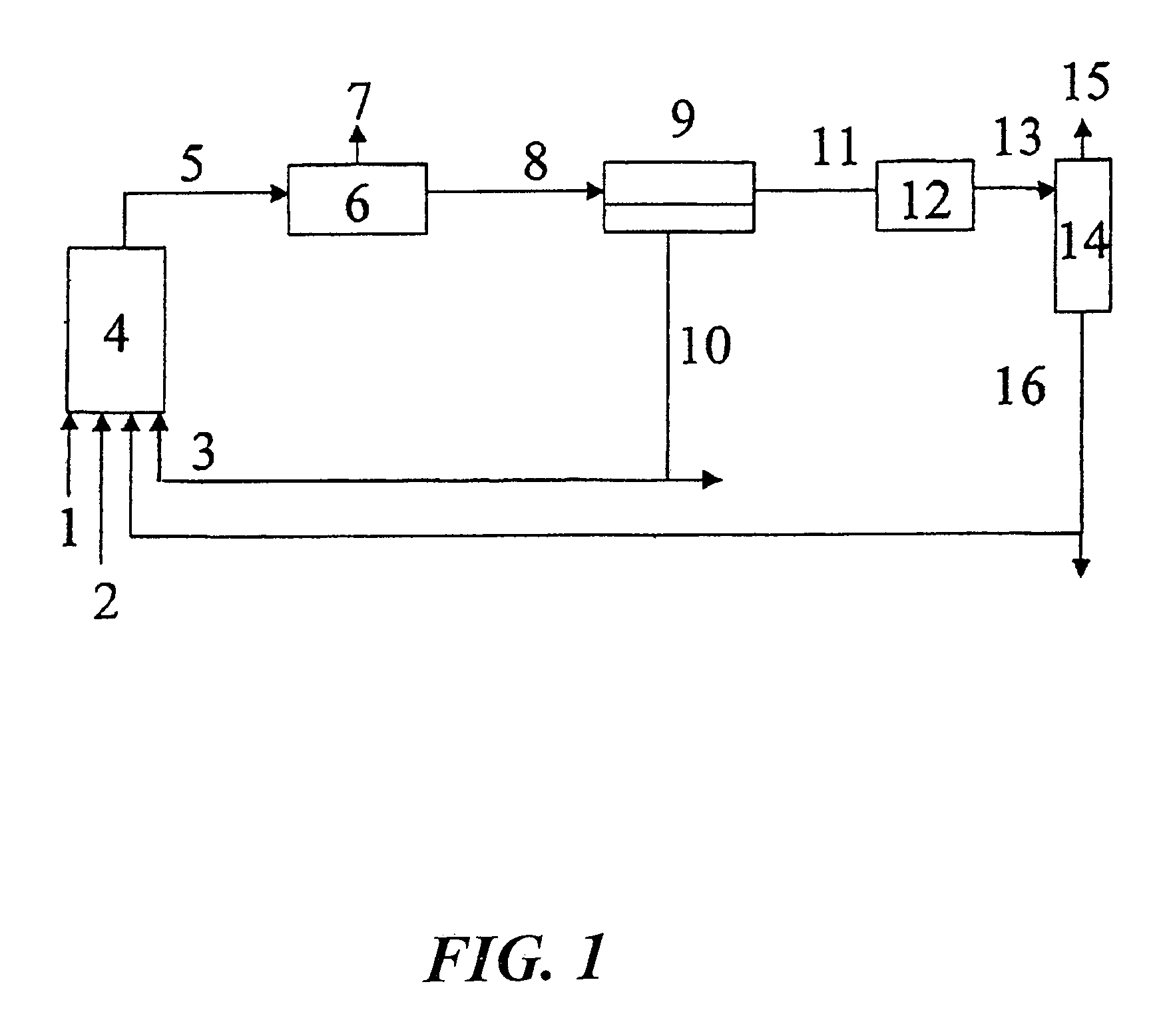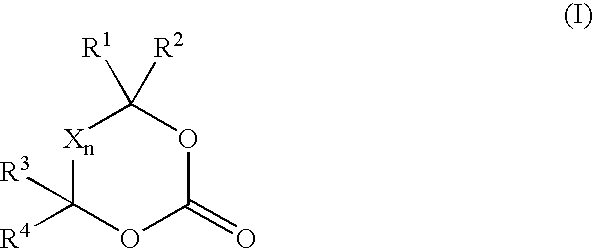Method for producing aldehydes by means of hydroformylation of olefinically unsaturated compounds, said hydroformylation being catalyzed by unmodified metal complexes in the presence of cyclic carbonic acid esters
- Summary
- Abstract
- Description
- Claims
- Application Information
AI Technical Summary
Benefits of technology
Problems solved by technology
Method used
Image
Examples
example 1
(Variant A)
[0079]560 g of propylene carbonate, 560 g of tri-n-butene and 0.0888 g or 0.0225 g of rhodium(II) nonanoate, corresponding to a rhodium concentration of 5 ppm or 20 ppm of rhodium based on the mass of the content of the reactor, were placed under a nitrogen atmosphere in a 2 l stirring autoclave. The autoclave was subsequently pressurized with synthesis gas (CO / H2 1:1 molar) and heated to the desired reaction temperature. The reactor pressure was monitored during heating. The reaction temperatures were from 130° C. to 180° C. The reaction pressure was 260 bar. During the reaction, further synthesis gas was introduced under pressure control. After 5 hours, the experiment was stopped and the reactor was cooled to ambient temperature. The reactor output was always made up of two phases and was free of rhodium precipitates.
[0080]The composition of the lighter hydrocarbon phase separated off in a phase separation vessel was determined by means of gas chromatography. The result...
example 2
(Variant B)
[0082]Di-n-butene (560 g) was hydroformylated in a manner analogous to Example 1. The reactor outputs from Experiments 7 to 13 were always made up of a single phase and were free of (rhodium) precipitates. In contrast to Example 1, the reactor output was analyzed by gas chromatography without work-up. The results of the gas chromatography and the reaction conditions such as temperature, pressure and rhodium concentration are summarized in Table 2.
[0083]
TABLE 2Hydroformylation of di-n-butene at various pressures, rhodiumconcentrations and temperatures. The proportions (in % by mass)reported relate to the composition of the reactor output, withcarbonic ester and catalyst present having been subtracted.T / c (Rh) / C9-C9-No.° C.p / barppmC8—HC / %aldehydes / %alcohols / %7150504067.530.42.18150250403.187.63.39170150526.366.627.11017025054.578.117.411170250404.020.575.512180504066.817.515.713180150409.923.366.8
example 3
(Conventional Procedure)
[0084]Di-n-butene was hydroformylated as in Example 2 except that pentabutane was used as solvent in place of propylene carbonate. The reactor output from Experiment 14 displayed significant black (rhodium) precipitates. The aldehydes and unreacted olefins were subsequently separated off from the catalyst-containing solution in a thin film evaporator and the catalyst solution was used in another hydroformylation (Experiment 15). The results of the gas chromatography and the reaction conditions such as temperature, pressure and rhodium concentration are summarized in Table 2.
[0085]
TABLE 3Hydroformylation of di-n-butene at 150° C. and 250 bar in pentabutane.The proportions (in % by mass) reported relate to the compositionof the reactor output, with pentabutane, by-products and catalyst presenthaving been subtracted. In Experiment 15, the catalyst solution obtainedin the work-up by distillation of Experiment 14 was reused.T / c (Rh) / C9-C9-No.° C.p / barppmC8—HC / %ald...
PUM
| Property | Measurement | Unit |
|---|---|---|
| Percent by mass | aaaaa | aaaaa |
| Percent by mass | aaaaa | aaaaa |
| Percent by mass | aaaaa | aaaaa |
Abstract
Description
Claims
Application Information
 Login to View More
Login to View More - R&D
- Intellectual Property
- Life Sciences
- Materials
- Tech Scout
- Unparalleled Data Quality
- Higher Quality Content
- 60% Fewer Hallucinations
Browse by: Latest US Patents, China's latest patents, Technical Efficacy Thesaurus, Application Domain, Technology Topic, Popular Technical Reports.
© 2025 PatSnap. All rights reserved.Legal|Privacy policy|Modern Slavery Act Transparency Statement|Sitemap|About US| Contact US: help@patsnap.com



